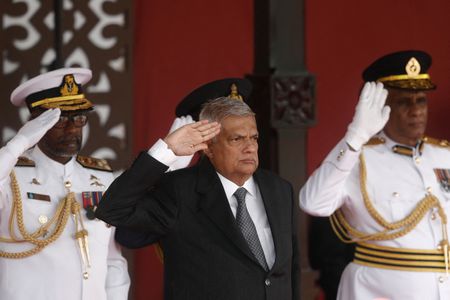NEW DELHI (Reuters) – Sri Lanka’s economy is expected to grow again from the end of this year and the government wants the country to exit bankruptcy by 2026, President Ranil Wickremesinghe told parliament on Wednesday.
The island nation of 22 million people has been struggling with its worst economic crisis since independence from Britain in 1948, which has forced it to default on loans and seek a $2.9 billion bailout from the International Monetary Fund (IMF).
Here are some of the key remarks made by Wickremesinghe:
* “We are now moving from a negative economy towards a positive one. By the end of 2023, we can achieve economic growth.”
* Aiming for inflation in single digits by the end of 2023
* Aims to raise revenue of the country to 15% of GDP from 8.15% currently
* “We should take action to rectify tax divergence. If we endure hardship for another five-six months, we can reach a solution.”
* Foreign reserves, which had fallen to zero, have now increased to $500 million
* If contry continues according to current plan, Sri Lanka can emerge out of bankruptcy by 2026
* Short-sighted decision of leaving IMF programme in 2020 has contributed to current situation
* Reached the final stage of negotiations with the IMF
* Sri Lanka is in direct discussions with China on debt
* Government introducing an anti-corruption bill
* Government strategy should be to guide the private sector in business activities
* Parliamentary Budget Office to be established as a fully independent entity
* Establishing a new institute of history, institute of economics and trade, and an institute for women and gender
* Govt launching four new universities
* Introducing new ordinances on climate change, re-forestation, child safety, women empowerment
(Reporting by Tanvi Mehta; Editing by Raju Gopalakrishnan)











